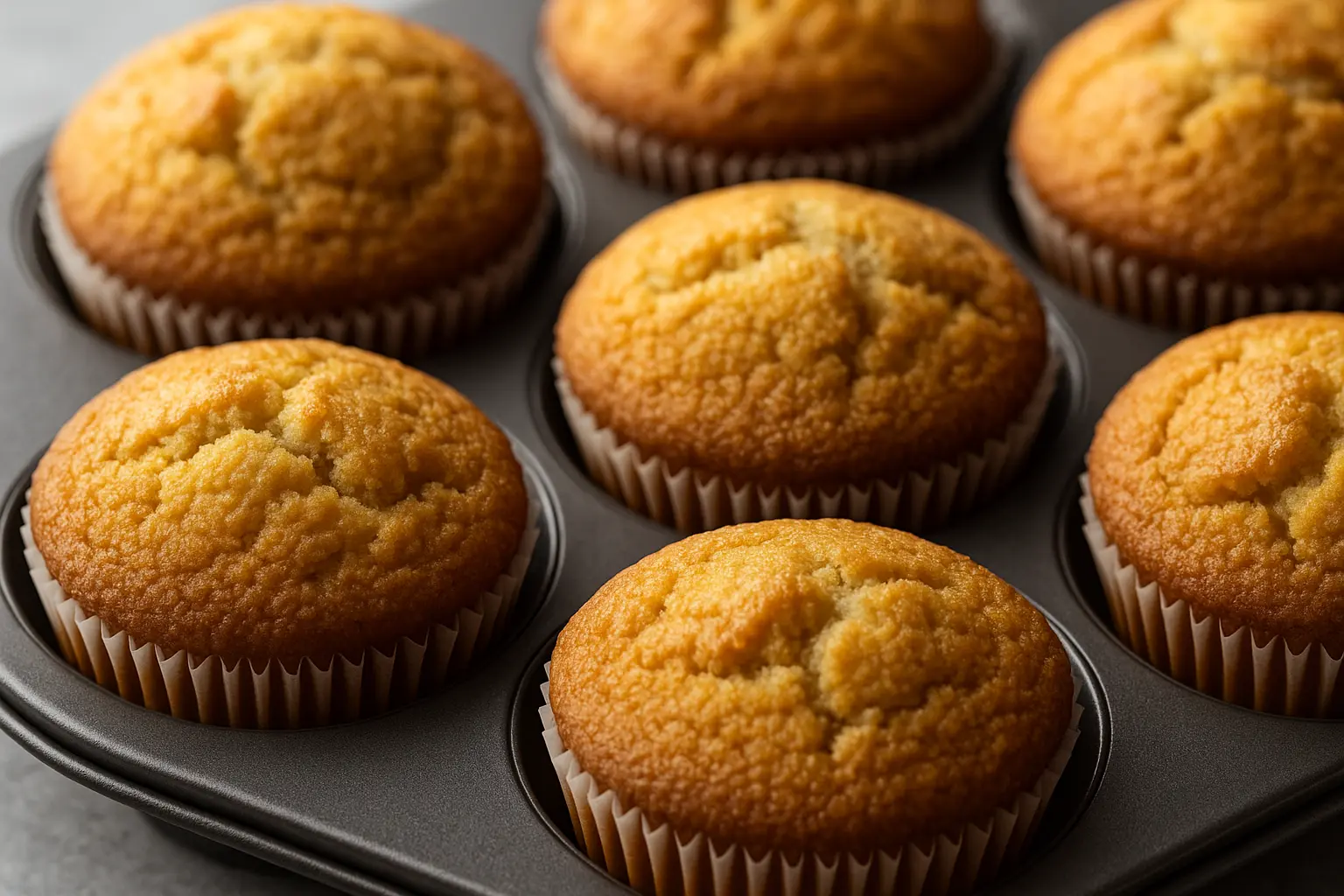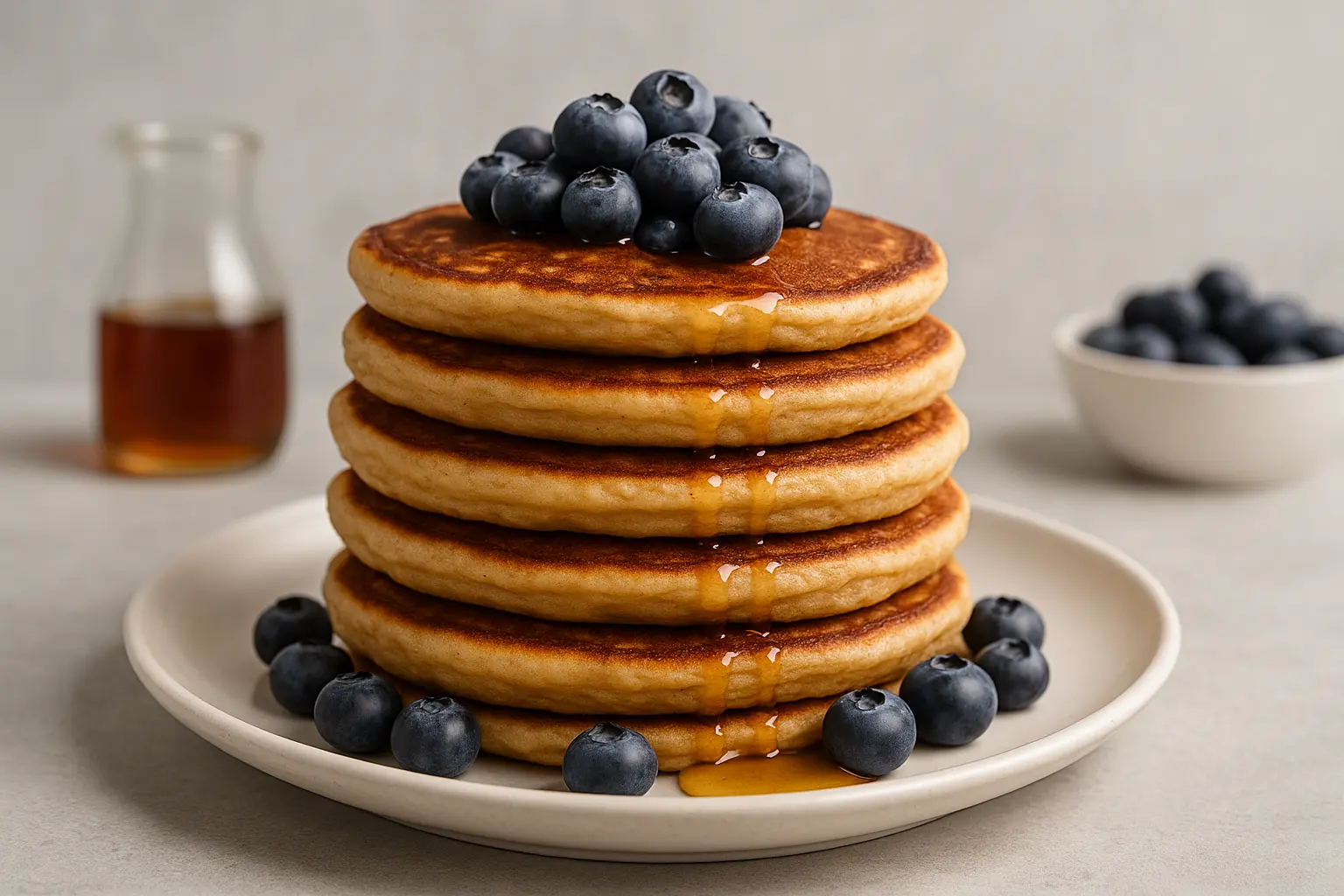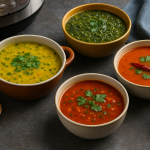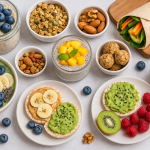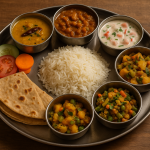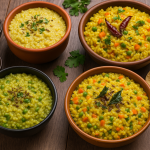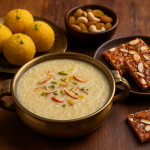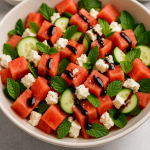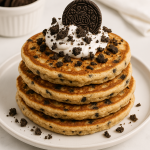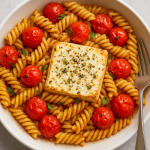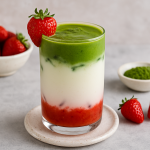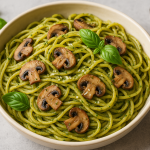There’s nothing quite like a warm muffin fresh out of the oven — soft, fluffy, and filled with comforting aromas of vanilla and butter. But for anyone on a gluten-free diet, achieving that classic muffin texture can be tricky. Gluten gives traditional muffins their structure, light crumb, and bounce. Without it, you risk ending up with dry, dense, or crumbly results.
The good news? With the right blend of gluten-free flours, proper moisture balance, and a few baking tricks, you can create gluten-free muffins so tender that nobody will believe they’re wheat-free. This guide covers everything you need to know: the science, the ingredients, expert techniques, and flavour variations — plus a reliable base recipe that guarantees success every time.

Why Moisture Matters in Gluten-Free Baking
In gluten-free baking, structure and moisture are everything. Traditional wheat-based recipes rely on gluten proteins to trap air and create elasticity. When you remove gluten, the batter loses that natural webbing, often leading to crumbly or dry muffins.
To keep gluten-free muffins moist and fluffy, you must:
- Use the right mix of starches and whole-grain flours
- Add moisture-retaining ingredients like yogurt, oil, or mashed fruit
- Avoid overbaking, which quickly dries out gluten-free batters
Think of it as rebalancing a delicate equation — adding softness, fat, and lightness in all the right places.
The Science Behind Gluten-Free Muffin Texture
Let’s break it down. Gluten acts as both glue and balloon. It holds ingredients together and traps expanding air bubbles when baking. Without it, your muffins can collapse or turn dense.
Here’s what replaces gluten’s role:
- Xanthan gum or guar gum: Helps mimic elasticity and binding.
- Eggs: Add lift and structure.
- Fat and moisture (oil, butter, yogurt): Keep the texture tender.
- Acidic ingredients (like buttermilk or lemon juice): React with baking soda for lift.
A perfect gluten-free muffin depends on balancing structure with moisture. Too much starch, and it’s dry. Too little, and it collapses. The secret lies in the flour blend.
The Best Gluten-Free Flours for Muffins
Not all gluten-free flours are created equal. Each has its own flavour, density, and absorption rate. For muffins, aim for a blend that offers both softness and structure.
Recommended Flour Mix
For 1 cup of all-purpose flour, substitute:
- ½ cup brown rice flour – for structure and mild flavour
- ¼ cup tapioca starch – adds lightness and chew
- ¼ cup almond flour – provides moisture and richness
Other great options include:
- Sorghum flour: Gives a mild, wheat-like taste.
- Oat flour (certified gluten-free): Adds tenderness.
- Potato starch: Lightens dense batters.
- Coconut flour: Absorbs moisture—use sparingly.
You can also use a store-bought gluten-free flour blend, but check if it contains xanthan gum. If not, add ½ teaspoon per cup of flour.
Essential Moisture Boosters for Gluten-Free Muffins
Here’s how to make your muffins stay moist long after baking:
1. Use Oil Instead of Butter
Oil keeps baked goods soft even when refrigerated. Neutral oils like canola, sunflower, or light olive oil work best.
2. Incorporate Yogurt or Buttermilk
They add tang, creaminess, and acidity that reacts with leaveners to give muffins a lift.
3. Add Fruit Purees
Mashed bananas, applesauce, or pumpkin purée naturally sweeten and moisten muffins without extra fat.
4. Honey or Maple Syrup
Liquid sweeteners not only flavour your muffins but retain moisture better than sugar.
5. Don’t Overmix
Overbeating traps too much air, causing muffins to rise and collapse. Mix just until combined.
Step-by-Step: Perfect Gluten-Free Muffins Base Recipe
Here’s a foolproof base recipe to adapt for your favourite flavours.
🧁 Ingredients (Makes 12 muffins)
Dry Ingredients:
- 2 cups gluten-free flour blend (see mix above)
- 1 tsp baking powder
- ½ tsp baking soda
- ½ tsp xanthan gum (if not in your blend)
- ½ tsp salt
Wet Ingredients:
- 2 large eggs (room temperature)
- ¾ cup sugar (white or coconut sugar)
- ½ cup oil (sunflower or light olive oil)
- ½ cup yogurt or buttermilk
- ½ cup milk (or dairy-free milk)
- 1 tsp vanilla extract
Optional Add-ins:
- 1 cup fresh or frozen berries
- ½ cup chocolate chips
- Zest of one lemon or orange
👩🍳 Instructions
- Preheat your oven to 180°C (350°F). Line a 12-cup muffin tin with paper liners.
- Whisk together dry ingredients in a large bowl — flour blend, baking powder, soda, xanthan gum, and salt.
- In a separate bowl, beat eggs and sugar until creamy and pale.
- Add oil, yogurt, milk, and vanilla, whisking until smooth.
- Gradually fold dry ingredients into wet, mixing gently until just combined. The batter should be slightly thick but spoonable.
- Fold in add-ins (berries, chocolate chips, etc.).
- Divide the batter evenly among the muffin cups, filling each about ¾ full.
- Bake for 18–22 minutes, or until a toothpick inserted in the center comes out clean.
- Let cool in the tin for 5 minutes, then transfer to a rack to cool completely.
Troubleshooting Common Gluten-Free Muffin Problems
| Problem | Likely Cause | Fix |
|---|---|---|
| Dry or crumbly texture | Too much starch or overbaking | Add yogurt, applesauce, or more oil |
| Dense and heavy | Not enough leavening or overmixing | Sift flour blend and mix gently |
| Gummy interior | Too much moisture or underbaking | Reduce liquids slightly, bake longer at lower temp |
| Sinks in the middle | Oven too hot or batter overmixed | Use room temperature ingredients and bake evenly |
| Grainy texture | Coarse flour blend | Use fine-ground flours or mix with tapioca starch |
Flavour Variations to Try
Once you master the base recipe, experiment with these irresistible versions:
1. Blueberry Lemon Muffins
Add 1 cup blueberries and 1 tbsp lemon zest. Top with coarse sugar before baking.
2. Chocolate Chip Banana Muffins
Use ½ cup mashed banana, reduce milk slightly, and add ½ cup dark chocolate chips.
3. Apple Cinnamon Muffins
Fold in 1 cup grated apple, 1 tsp cinnamon, and a pinch of nutmeg.
4. Pumpkin Spice Muffins
Substitute ½ cup pumpkin puree for milk and add 1 tsp pumpkin spice blend.
5. Carrot Walnut Muffins
Add 1 cup grated carrot, ½ tsp cinnamon, and a handful of chopped walnuts.
How to Keep Gluten-Free Muffins Moist for Days
Because gluten-free baked goods dry out faster, storage matters as much as baking.
Store Properly:
- Cool muffins completely before storing.
- Store in an airtight container at room temperature for up to 2 days.
- For longer freshness, refrigerate up to 5 days or freeze for up to 2 months.
Reheat for Softness:
Warm muffins in the microwave for 10–15 seconds or in the oven at 160°C (320°F) for 5 minutes to revive their texture.
Add a Moisture Lock:
Place a slice of apple or bread in the container — it helps maintain humidity and prevents drying.
Making Them Dairy-Free or Vegan
Gluten-free doesn’t have to mean dairy or egg-laden. Here’s how to adapt:
For Dairy-Free Muffins:
- Replace yogurt/buttermilk with coconut yogurt or almond milk mixed with 1 tsp lemon juice.
- Use coconut oil instead of butter.
For Egg-Free/Vegan Muffins:
- Substitute 1 egg with one of these options:
- 1 tbsp flaxseed meal + 3 tbsp water (flax egg)
- ¼ cup unsweetened applesauce
- ½ mashed banana
Tip: Vegan muffins may take slightly longer to bake — add 3–5 minutes to your timer.
Ingredient Swaps for Healthier Muffins
Want to make them even more wholesome?
| Ingredient | Healthier Swap | Benefit |
|---|---|---|
| White sugar | Coconut sugar or honey | Lower GI, richer flavour |
| Oil | Mashed avocado | Adds healthy fats |
| Milk | Oat or almond milk | Dairy-free and light |
| All-purpose GF flour | Sorghum + oat blend | Adds fibre and protein |
| Chocolate chips | Cacao nibs or dried fruit | Less sugar, more nutrients |
Pro Tips for Consistently Fluffy Gluten-Free Muffins
- Use room temperature ingredients – helps the batter mix evenly.
- Don’t skip resting the batter – let it sit 10–15 minutes before baking for better hydration.
- Use fresh leaveners – baking powder loses strength after 6 months.
- Fill muffin cups evenly – for consistent rise.
- Test early – check doneness 2–3 minutes before the timer ends.
Serving Ideas
These muffins are perfect for:
- Breakfast on-the-go – Pair with a smoothie or coffee.
- Lunchboxes – Kid-approved and easy to pack.
- Snacks – Great mid-afternoon energy boost.
- Dessert – Serve warm with whipped cream or yogurt.
Try spreading them with almond butter, berry compote, or lemon glaze for a café-style treat.
Frequently Asked Questions (FAQ)
1. Can I make these muffins nut-free?
Yes! Simply replace almond flour with oat or sorghum flour for a nut-free version.
2. How do I make them sugar-free?
Use erythritol or monk fruit sweetener. You may need to add an extra tablespoon of yogurt to retain moisture.
3. Can I bake these in an air fryer?
Absolutely. Bake at 160°C for 12–15 minutes in silicone muffin cups.
4. Why do my gluten-free muffins fall apart?
They may be missing a binding agent like xanthan gum or flax egg. Always use one.
5. Can I make mini muffins?
Yes, just reduce the baking time to 10–12 minutes.
Nutritional Snapshot (per muffin)
(Approximate values based on base recipe)
- Calories: 190
- Protein: 4g
- Carbs: 22g
- Fat: 8g
- Fibre: 2g
- Sugar: 10g
Final Thoughts
Baking gluten-free muffins doesn’t have to feel like chemistry class. Once you understand how moisture, texture, and structure interact, the process becomes second nature. The key is to choose the right flour combination, use adequate moisture sources, and avoid overbaking.
Whether you love blueberry bursts, chocolate chunks, or cinnamon swirls, these moist and fluffy gluten-free muffins will easily become a go-to in your kitchen. They’re versatile, family-friendly, and perfect for every occasion — from breakfast to school snacks to weekend brunches.
So preheat that oven, grab your whisk, and bake a batch of muffins that prove “gluten-free” and “deliciously fluffy” can truly go hand in hand.
Leave a comment
Your email address will not be published. Required fields are marked *


